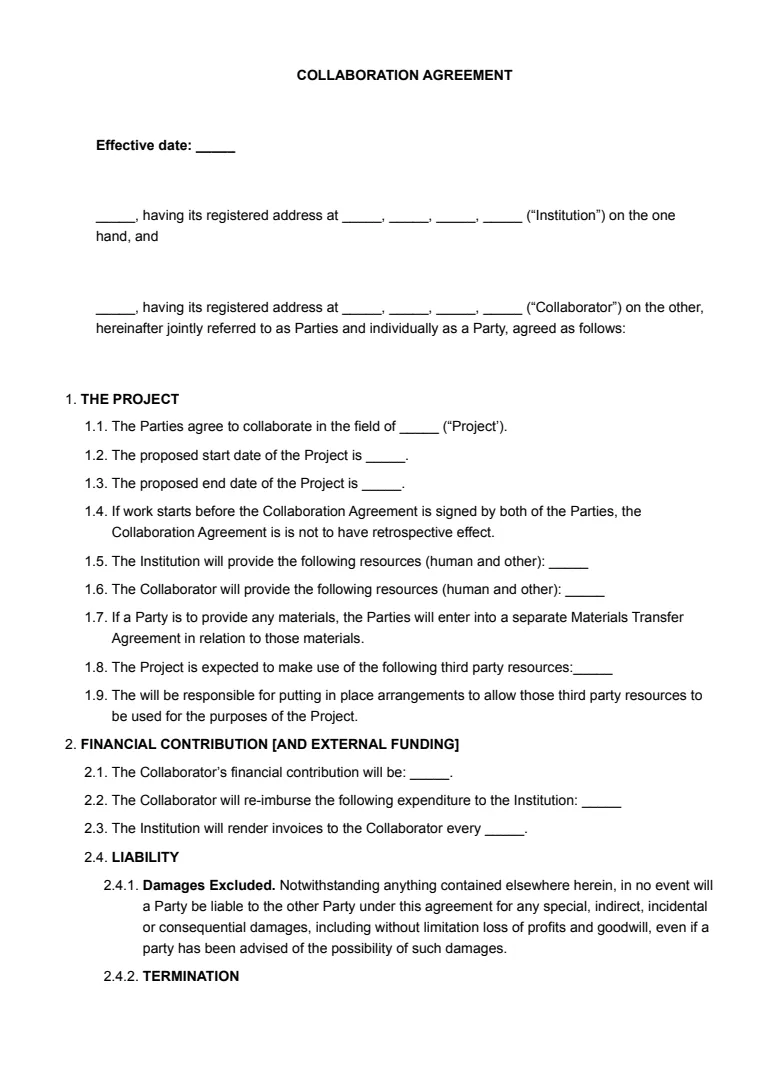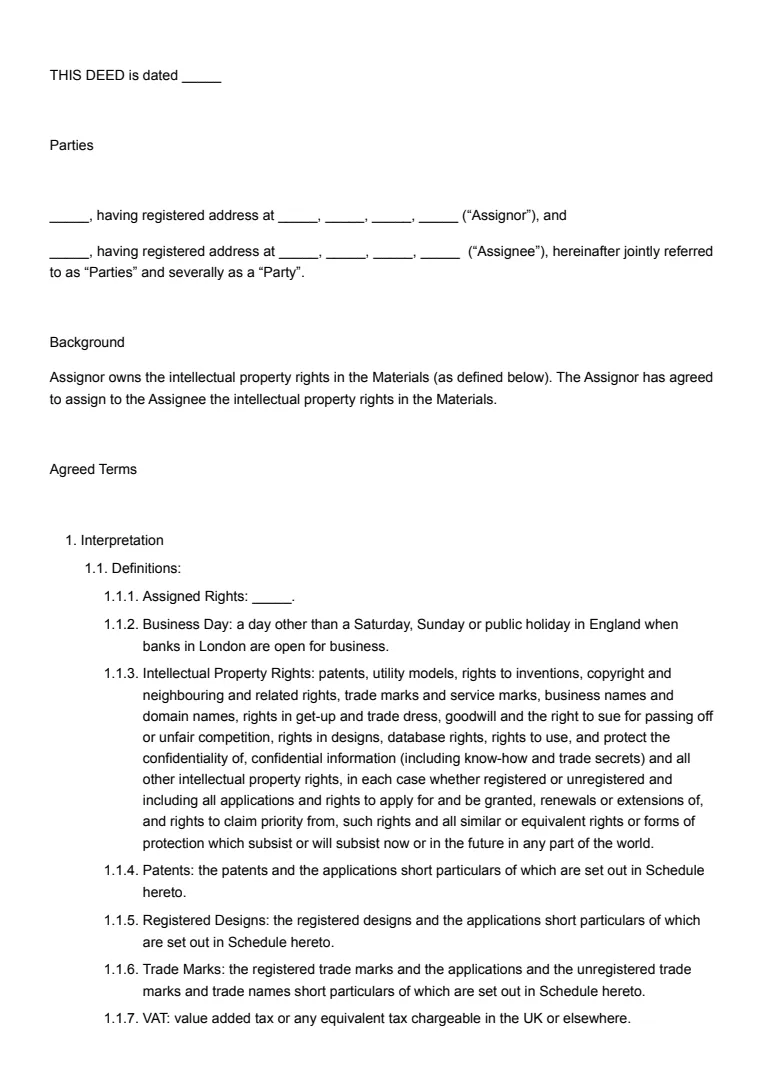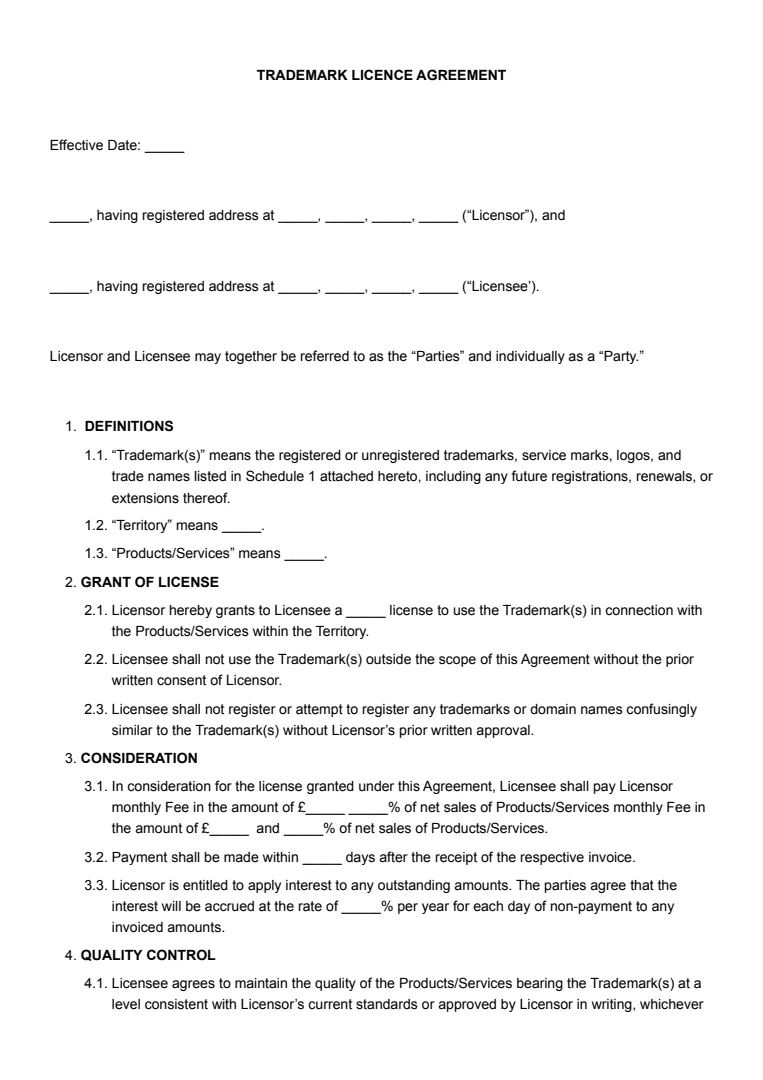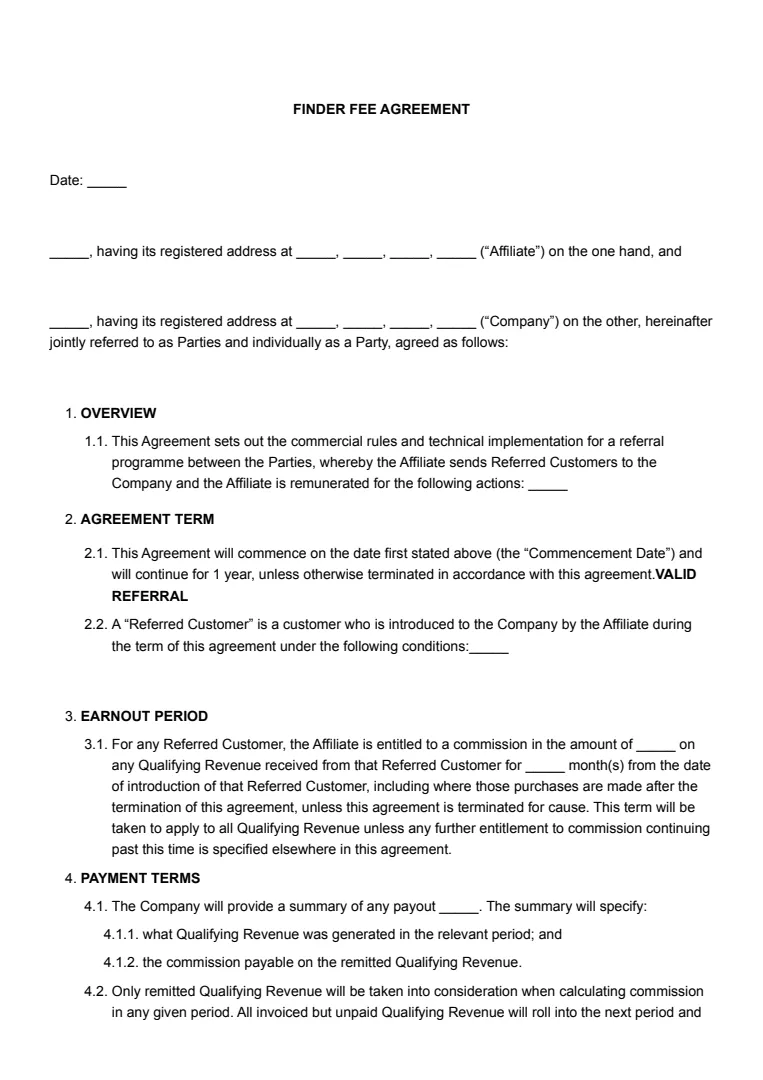What Is a Collaboration Agreement?
When you enter into a partnership with others, a collaboration agreement (or collaboration contract) comes into play.
It's a legally binding contract that outlines the terms and conditions of joint ventures between two or more parties. Think of it as a roadmap that ensures everyone is on the same page as you work toward a shared goal.
You'll often hear it referred to as a collaborative agreement. The idea is to make sure each participant knows their role, responsibilities, and how the project costs will be divided.
Everyone funds their side of things, ensuring fairness while achieving common objectives.
In a typical scenario, each party might focus on developing crucial research or bringing specific expertise to the table. For example, in a tech project, one company might handle software development while another manages marketing.
This kind of agreement helps in avoiding misunderstandings or disputes down the road.
If you're considering entering such an agreement, it's essential to include specific details like timelines, ownership of intellectual property, and conflict resolution methods. That way, you minimise risks and create a seamless working environment.
So, when you think about collaboration, remember that a well-drafted agreement is key.
When Is a Collaboration Agreement Needed?
You'll want to consider a collaboration agreement whenever you and at least one other party plan to work together on a shared project. This could involve creating a new product, organising a joint venture, or even developing software.
A collaboration agreement is especially crucial when you're entering into partnerships where intellectual property will be developed or shared. Having an agreement spells out who owns what and how any new IP will be managed.
If there are multiple stakeholders contributing different resources or expertise, a collaboration agreement is a smart move. It helps clarify each party's roles, responsibilities, and investment in the project.
This way, you avoid misunderstandings that could lead to conflicts.
When financial contributions are involved, outlining those in a collaboration agreement is vital. This ensures that everyone knows their financial obligations and what they can expect in return. Splitting funds becomes streamlined, and disputes are minimised.
In some cases, parties use memorandums of understanding (MOUs) in the early stages to sketch out broad terms.
However, if anything significant is at stake, transitioning to a formal collaboration agreement is beneficial. You gain legal clarity and protection in case things don't go as planned.
For projects spanning a longer duration or involving sensitive data and confidential information, a detailed agreement ensures that data security and privacy commitments are respected. You'll feel more secure knowing your interests are safeguarded.
How To Write A Collaboration Agreement
Writing up a collaboration agreement doesn’t have to be difficult. You can follow these steps to produce a collaborative contract that works for all parties involved. Additionally, you can use a collaboration agreement template or sample to help guide you.
Step 1: Identify the Purpose
Start by clearly defining why you need a collaboration agreement. Think about whether it's for a project, joint venture, or creative partnership.
Being specific about the purpose will guide the rest of your document and help avoid misunderstandings later.
Step 2: List the Parties Involved
Include the full names and roles of each participant. All parties should be clearly identified to ensure there’s no confusion about who’s involved.
You might also want to include contact details to make communication straightforward.
Step 3: Define Responsibilities
Clearly lay out what each party is expected to contribute.
Specify the tasks, resources, or expertise each person will bring to the table. This prevents potential disputes and ensures that everyone knows their role.
Step 4: Set the Terms and Conditions
Detail the legal and financial aspects, such as payment terms, budget contributions, and intellectual property rights.
Decide how profits or losses will be shared. Be precise and use specific figures where applicable.
Step 5: Outline the Duration
Include start and end dates to define how long the agreement will last.
If it's open-ended, mention the terms for termination or renewal. Clarity on timelines keeps everyone on the same page.
Step 6: Address Confidentiality
You might want to add a confidentiality clause.
This ensures that sensitive information shared during the project won’t be disclosed to third parties. If you're dealing with trade secrets, this section is crucial.
Step 7: Include a Dispute Resolution Mechanism
Mention how you'll handle disagreements, be it through mediation or arbitration.
This will help manage conflicts smoothly if they ever arise, keeping the focus on resolving issues rather than escalating them.
Step 8: Finalize and Sign
After drafting, have each party review and agree on the document. Make any necessary amendments.
Once everyone is satisfied, each party should sign to validate the agreement, ensuring it's legally binding.















